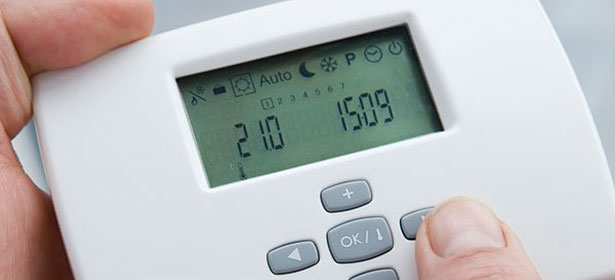We subscribe totally to the concept of “keeping things going”, with one car 83 years old, and another 33 years old. Hence our central heating boiler is a 1994 Trianco Eurostar, which we have inspected and adjusted by a really good chap each year. I have fitted many spare bits to it over the years, and helped our friendly mobile welder patch up the odd leak from time to time.
We have thermostatic radiator valves (TRVs) in every room. Truth to tell, we get strange results sometimes, when a radiator is “on”, although by the temperature of the room (measured by thermometer) one expects it to be “off”. But by-and-large the system works, and I do not understand why one would also want a room thermostat – but in your column and your book you have stated that TRVs are not a substitute for a room thermostat. Why is this, please? And would we need a room thermostat in each of our ten rooms?
MR, Wheathamstead
I am delighted to hear that you have such a sustainable attitude, and have not been scared into scrapping your solid 21-year-old boiler. Modern condensing boilers are packed with electronics, which are destined to fail after a few years, and this accounts for their low life-expectancy. Your existing boiler is much simpler in operation, and there is no reason why it shouldn’t be kept running for another 21 years.
The efficiency and economy of your central heating system could be improved even further by the fitting of a room thermostat, which is really just a simple “on / off” switch wired into the boiler’s power supply, and set for a particular temperature – usually 20C to 22C.
TRVs on the individual radiators can be useful, but they are fairly primitive devices, which rely on the expansion of a bubble of wax or liquid to push a spring-loaded plunger into the radiator valve. They degenerate over time, cannot be re-calibrated, and can jam in either the “off” or “on” positions, or even half-way. I am not surprised to hear that they are ineffective in some of your rooms.
The main problem with the absence of a room thermostat, however, would be when all the TRVs were turning the radiators “off”, but the timer and the boiler thermostat tell the boiler that heat is still required. In which case the boiler will keep firing-up and shutting down, but not delivering any further heat to the radiator circuit. The system will just be burning gas, and sending waste heat up the flue.
It is possible to have more than one room thermostat, creating what is known as a zoned heating system. This might require some re-routing of the pipework, and each zone would be controlled by a motorised valve controlled by its own room ‘stat. If your home is really large, then this might be worth considering, and a good heating engineer will be able to advise.
Most homes have just one room ‘stat, however, situated in the hall. The rationale for this is that when the front door is opened (in winter) the incoming cold air is registered by the thermostat, which turns on the central heating to warm the radiators before the cooling effect reaches the other rooms. For this reason, the hall radiator should not be fitted with a TRV, as the two thermostats would be fighting each other to gain or deny heat from the boiler.

